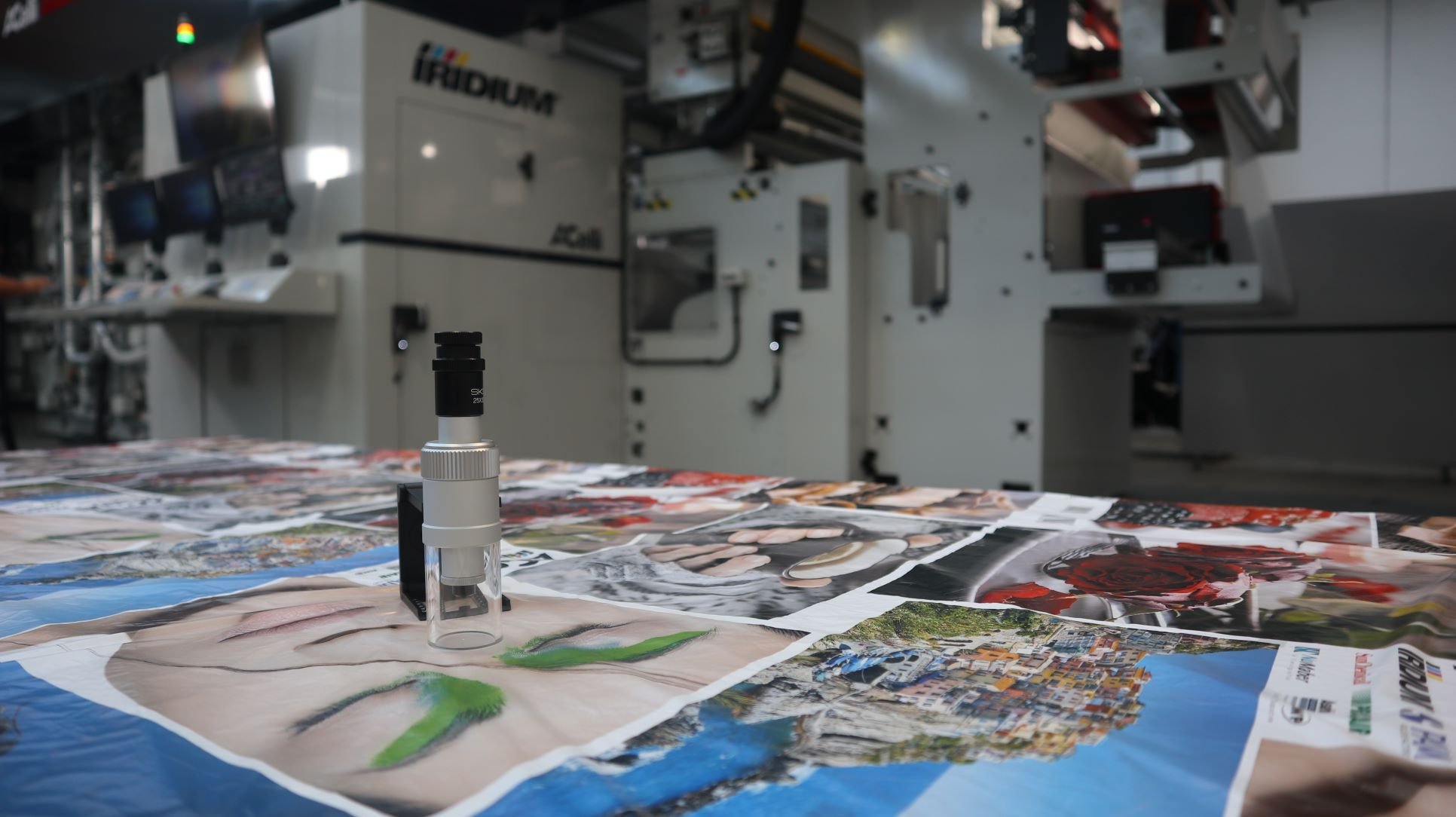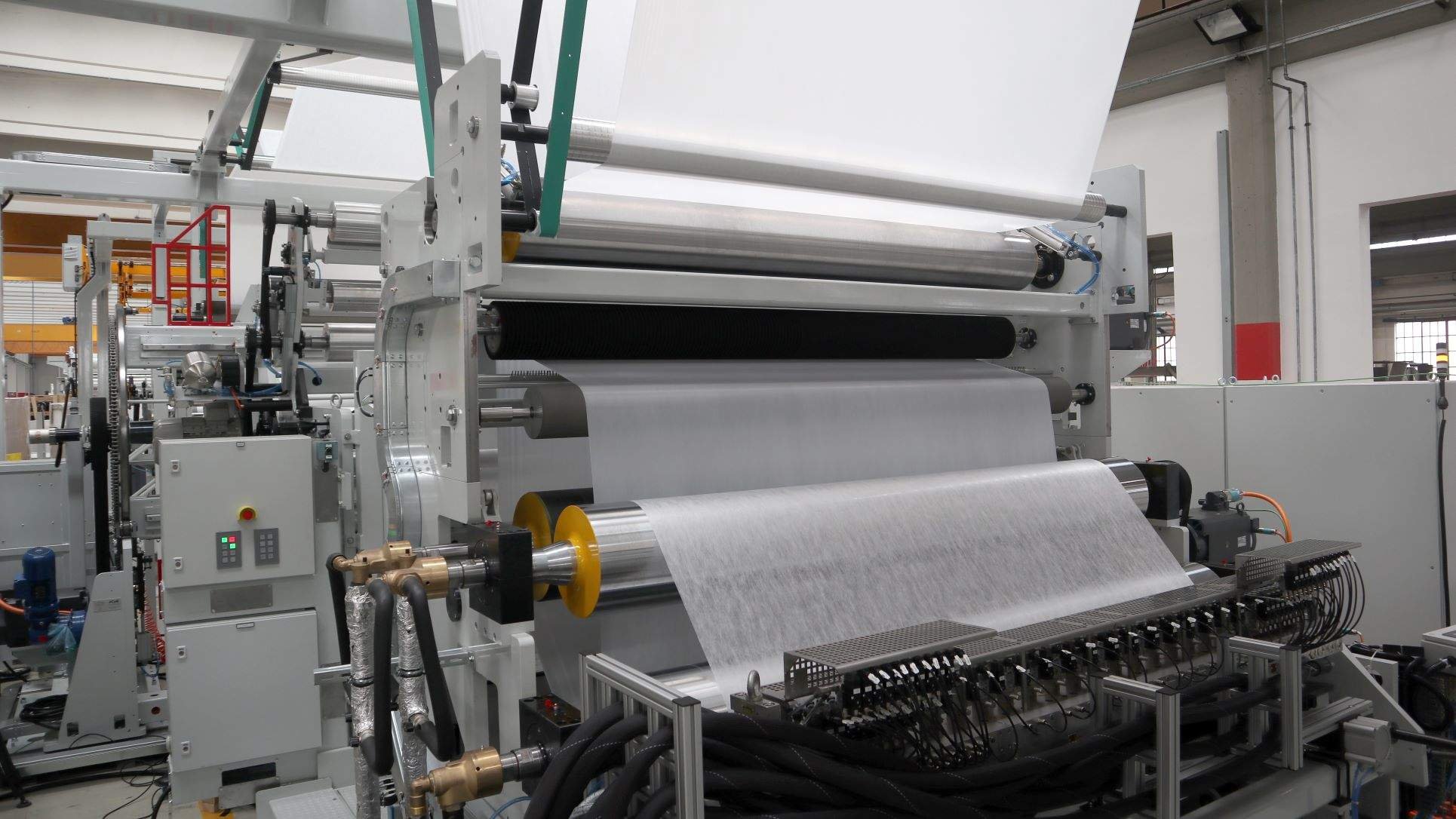[UPDATED ON APRIL 2025]
Nonwoven hygiene products, such as diapers, must be waterproof, breathable and able to absorb liquids effectively in order to perform their functions effectively. In addition to the functional aspects, great importance is also given (especially on a psychological level) to the aesthetic appearance of the diaper: the products featuring printed images are, in fact, certainly more captivating.
A printed hygiene product is not only more marketable, but can also increase brand awareness in the event that company recognition symbols are used to which the consumer can immediately link benefits over the competition. In summary, flexo printing and lamination processes are of great importance for nonwoven hygiene products.
Flexographic printing
Flexography is a rotary printing method, used in numerous industries such as food packaging, which involves the transfer of fast-drying inks from flexible printing plates (called clichés) to the desired substrate.
In the printing process for hygiene products, such as diapers and feminine hygiene products, there are various elements to take into consideration:
SUBSTRATE
Printing is carried out on plastic film (usually low density polyethylene, or LDPE, and breathable films are used in diapers) which will then be coupled to the nonwoven material through lamination. Resistant to tearing and with a waterproof outer surface, these materials require special care in setting up the machine and choosing the ink (as we will see shortly) so as to ensure effective adhesion of the pigment.
INK TYPE
In the process under consideration, we can use water-based (preferable and increasingly used in this type of application), solvent-based and UV-curable inks. The choice is made on the basis of the substrate to be processed, the final applications and local regulations, which could prohibit the use of polluting colors deemed potentially harmful to the health of the consumer and to the environment.
PRODUCTION NEEDS
The flexographic printer must be adaptable to various production needs: from those that require consistency and stability of machine performance for long periods of time (long print runs and low number of setups) to those that require a greater number of setups and, therefore, shorter periods of uninterrupted operation (such as, for example, in the case of small converters).

Nonwoven lamination process
In order to adapt the nonwoven to a wide variety of uses, the lamination process is often used. This involves the coupling of multiple materials by means of adhesives (or heat) and pressure with the aim of combining the properties of a material (such as nonwoven) with those of another nonwoven or a plastic film.
Depending on the process used, it is therefore possible to obtain transpiring and porous nonwovens capable, at the same time, of maintaining their waterproof properties and of being soft, light and suitable for printing.
The different types of lamination
Today the most used lamination processes are adhesive, thermal, ultrasonic lamination and extrusion coating.
Adhesive lamination can be done in various ways:
- With hot melt adhesives
- With cold glue
- Dry
- Wet
- Without solvents
The first method is the most used because it allows substrates with very different characteristics to be coupled very precisely and at high speeds, while maintaining the properties of the original materials (breathability, flexibility, etc.) and allowing the use of various methods of application of the adhesive.
In thermal lamination the layers of material, which must have the same or similar melting temperatures, are instead coupled together using pressure (exerted in the nip between two opposing rolls) and heat, thus melting the two webs together.
As the name suggests, ultrasonic lamination instead uses a high frequency vibration to generate heat locally, obtaining the fusion and consequent bonding of the thermoplastic fibers. In addition to being the most environmentally sustainable method, as it does not require the use of chemicals or adhesives, it allows to laminate up to seven layers in a single step and to combine materials with different characteristics, obtaining particularly uniform composites in which the individual materials remain completely intact.
Finally, the extrusion coating process involves the application of a thin polymer coating on one or both sides of one or more layers of nonwoven material. The result is a waterproof, printable and antistatic material, with a lower cost of the raw materials used and a better structural stability of the resulting product.

How to properly perform flexographic printing and subsequent lamination for hygiene products
If you want to print a plastic film to be subsequently coupled to a nonwoven substrate through lamination, in addition to ensuring a high print quality of the desired motif, it is essential to establish, set and maintain the print repeat length of the pattern to be reproduced.
A variation of the print repeat length, i.e. the distance between two same points in two contiguous images of a pattern, outside the predetermined tolerance will in fact give rise to non-conforming reels to be rejected, with obvious losses (even more significant if these reels are incorrectly subjected to the next lamination process). Therefore, the following factors become fundamental:
- Tension control: apply correct tension values based on the specific substrate and processing phase before, during and after the printing process (including the winding and lamination phase, which could alter the previously obtained print repeat length)
- Structural stability of the printer: the result of an accurate balance between all the parts, both mechanical and electronic, of the machine.
- Air temperature: during the ink drying phase, it is necessary to set an air temperature such as to achieve the desired result without damaging the printed substrate under tension.
- Management of the printed reel aging: by virtue of the elasticity that characterizes the non-woven fabric, with the passage of time the printing pitch tends to lengthen in the outer coils of the printed reel. A similar phenomenon can also occur after the roll lamination process itself.
Once the printing has been carried out and we reach the lamination phase, it is necessary to ensure that the chosen bonding sytem does not damage the materials to be coupled and that the tension values of the aforementioned are adequate in relation to each other, in order to avoid the formation of a defective composite.
A.Celli IRIDIUM® and F-LINE®: the ideal solutions for printing and lamination
From the extensive knowledge of the hygiene sector and of the processing problems to be faced in order to obtain a high quality final product, A.Celli has decided to provide its customers with the means to allow you to achieve the desired results.
Thanks to the IRIDIUM® flexographic printer, A.Celli is in fact able to:
- Optimally control and manage the print repeat length throughout the production process, thanks to solutions such as the interactive print repeat length adjustment system and the Slittomatic®, i.e. a system for automatic positioning of the slitting units with respect to the printer.
- Ensure correct tension throughout the entire printing process through dynamic tension control of the thinnest materials.
- Eliminate the problems that can arise during long print runs.
- Substantially reduce waste during the setup phases (which on average lead to discarding 350 m of product at a time) and printing.
- Enable efficient drying of water-based inks, regardless of the print operating speed (600 mpm and above).
As for lamination, on the other hand, we can identify a series of ideal characteristics that a lamination line should possess, namely:
- Reduced change times
- A solid and robust construction
- Several control areas and a quick setup
- Unwinders and rewinders equipped with double stations to allow the reels to be changed while the machine is running
- A centralized control panel with business intelligence and data collection capabilities
- A pneumatic edge guiding system for unwinding and/or rewinding
Features that we find in the A.Celli F-LINE® complete turnkey lamination lines, designed to perform high quality adhesive, thermal and ultrasonic laminations. Equipped with unwinding and laminating stations and an in-line slitting section, it is capable of laminating two or more layers with a maximum web width of 3,600 mm at a maximum operating speed of 400/800 m/min.
To this is added the ability of A.Celli to integrate the data of the upstream machines with those downstream, thus obtaining a perfect tracking of the finished reels and of the single process phases that led to its formation.
Finally, A.Celli is able to offer, as an option, a perfect integration of the flexographic printer with the lamination line. In this case, the IRIDIUM® flexo printer will be positioned inside the lamination line, between the unwinder and the lamination section itself, offering you the possibility of:
- Managing the print repeat length directly on the finished product, right after the printing phase is completed
- Laminating with tighter tolerances than would be expected when laminating previously printed rolls.
- Avoid the use of an unwinder and a winder, respectively before and after the flexographic printing machine, and the consequent handling of reels between two off-line machines.
Do you want to find out more about the complete range of A.Celli solutions for the end of line? Download our free eBook “A.Celli end-of-line solutions for nonwovens production”!

